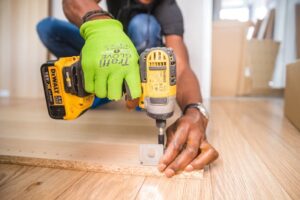
Indoor air pollution is just as bad for your health as outdoor air pollution. During the summer and winter, you might keep your house closed tight to keep the indoor temperature comfortable, but unfortunately, this can cause indoor air pollutants to build up.
Indoor air pollutants can be a health risk for you and your family. Symptoms that your home has a lot of indoor air pollution includes things like headaches, dizziness, fatigue, sinus congestion, and coughing and sneezing.
Combustion
Combustion is one source of indoor air pollutants. Burning any sort of fuel causes the release of carbon monoxide and nitrogen dioxide. Types of combustion that releases pollutants into the air include smoking, gas stoves, wood stoves, pellet stoves, fireplaces, candles, and oil furnaces.
Bacterial Pollutants
Bacterial pollutants include pet dander, bacteria, mold, and waste from insects and dust mites. This type of pollution can form inside your air conditioner, vents, and in other places around the home that are out of sight or reach. When the furnace or AC is turned on, the circulating air can cause these pollutants to move through your home, causing respiratory problems for yo and your family.
Lead
Lead is mainly found in the paint in older homes. The use of lead in paint was banned in 1978, but it might be under layers of new paint. Lead particles can become discharged with remodeling work and accumulate throughout your home.
Carpeting
Indoor air pollutants get trapped in the carpet fibers. Shoes can also track in a lot of outdoor air pollutants and allergens, trapping them in the carpet of your home. Every time someone walks across the carpet, it can cause these pollutants to circulate.
Volatile Organic Compounds (VOCs)
Volatile organic compounds are the most common type of indoor air pollutants. Common VOCs include formaldehyde, toluene, and benzene. Many household items contain these VOCs including:
- Furniture
- Air fresheners
- Cleaners and disinfectants
- Glues and permanent markers
- Printers and copiers
A residential bipolar ionization unit can help clean the indoor air and get rid of these air pollutants. Ionization is nature’s way of cleaning the air. You might notice how fresh the air smells after a thunderstorm. That is because thunderstorms create negative ions, and those ions clean and refresh the air.
A bipolar ionization unit can be a stand-alone product or integrated into the home HVAC system. They convert oxygen molecules into charged atoms. Once charged, these atoms surround and deactivate pollutants including, allergens, viruses, and bacteria.
The best way to keep your home free from indoor air pollutants is to clean frequently, vacuum and shampoo carpets, use ventilation, and consider a bipolar ionization unit for your home. Getting rid of these pollutants can help keep you and your family safe.


